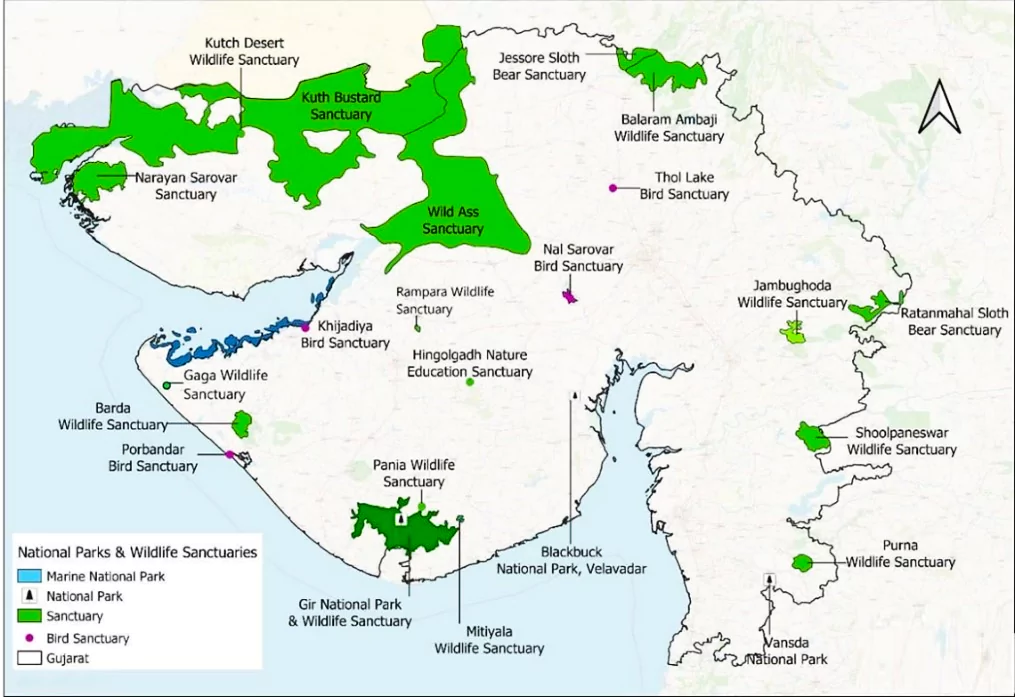![]() 4 Mar 2025
4 Mar 2025

The Prime Minister chaired the seventh meeting of the National Board for Wildlife (NBWL) at Gir National Park in Gujarat on World Wildlife Day.
 Protected Status
Protected Status| Aspect | Asiatic Lion (Panthera leo persica) | African Lion (Panthera leo) |
| Size | Smaller; males weigh 350-450 lbs | Larger; males weigh 330-500 lbs |
| Mane | Shorter, sparser, darker mane | Fuller, longer mane covering entire head |
| Pride Size | Smaller prides (2-5 females); males live with pride females | Larger prides (up to 6 females); males do not live with females unless mating or at a large kill |
| Skin Folds | Has a long skin fold under the belly | No skin fold |
| Distribution | Found only in Gir National Park, Gujarat, India | Found in Sub-Saharan and West Africa |
| Protection Status | IUCN Red List : Endangered
CITES : Appendix I WPA 1972: Schedule I CMS : Appendix II |
IUCN Red List : Vulnerable
CITES: Appendix II CMS: Appendix II |
<div class="new-fform">
</div>